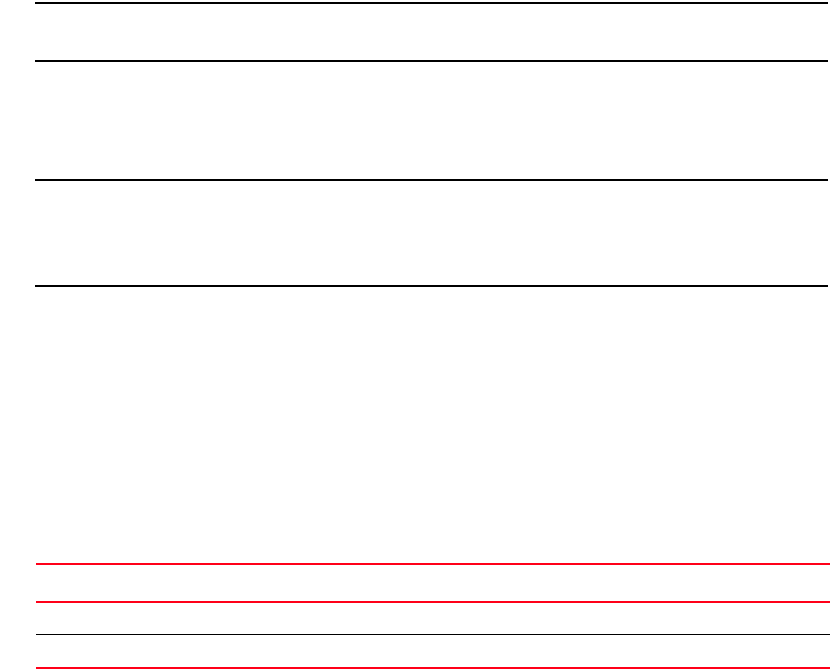(Supporting Network Advisor 12.3.0)
Table Of Contents
- Contents
- About This Document
- Overview of the Network Advisor REST API
- Getting Started
- Using the Brocade Network Advisor REST API
- Introduction
- Logging in and out
- Specifying content type
- Versioning (backward compatibility)
- Using the Topology API
- Using the SAN Fabric Discovery API
- Using the Traffic Flow API
- Using the Summary Data API
- Using the Events API
- Using the Zoning API
- Using the Historical Performance Data API
- Fibre Channel Routing
- Handling errors
- Use Cases
- API Reference
- Request and Response Schemas
- Topology
- SAN fabric discovery
- Summary data
- SummaryResponse
- StatusSummary
- AssetClassificationSummary
- NetworkObjectCountSummary
- EventsSummary
- BottleneckViolationsSummary
- OutOfRangeViolationsSummary
- PortHealthViolationsSummary
- VmViolationsSummary
- SummariesResponse
- PortsMonitorSummaryData
- MonitorDistributionData
- ProductsMonitorSummaryData
- FlowMonitorSummaryData
- Events
- Zoning
- Historical performance data
- Authentication and session management

Brocade Network Advisor REST API Guide 7
53-1003160-01
Retrieving resource groups
2
The JSON content of the response should look like the following:
{
serverName: "DCM-x3650-103"
serverIp: "10.24.48.103"
}
This response returns the name of the Network Advisor and its IP address.
NOTE
Different tools may display the JSON or XML responses differently.
5. Record the value of the WStoken response header.
In this example, the value of the WStoken field is ghe/4Q//I0EJcxD6UPdO9/fvI94=. You need
this token for all subsequent Network Advisor REST API requests.
NOTE
A client session has a default idle timeout of 10 minutes after which the token is no longer
valid. If you try to use an invalid token, an error message is returned:
errorCode=4009, errorMsg=Invalid token in header.
Retrieving resource groups
To retrieve resource groups defined in Network Advisor, complete the following steps.
1. Enter the following URI in the URL field:
http://<ip_address>/rest/resourcegroups
2. Define the following HTTP request headers.
3. Set the HTTP request method to GET.
4. Send the request.
The following is an example of resource groups returned by Network Advisor:
{
resourceGroups: [16]
0: {
key: "10:00:00:05:33:A6:B6:17"
name: "10:00:00:05:33:A6:B6:17"
type: "FC_FABRIC"
}
1: {
key: "10:00:00:05:1E:DB:1E:1E"
name: "10:00:00:05:1E:DB:1E:1E"
type: "FC_FABRIC"
...
}
TABLE 2 Request headers
Header name Value
WStoken The session token header returned after a successful login.
Accept application/vnd.brocade.networkadvisor+json;version=v1










